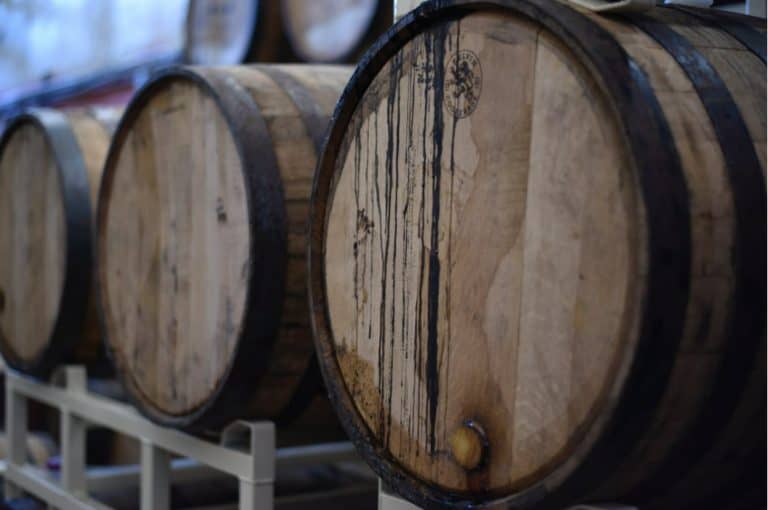
Order your next bottle of Scout & Cellar wine TODAY!
Imagine that you are getting ready for a dinner party and you want to impress your guests with your wine knowledge. You decide to serve some Spain wine. But, you are not sure which types of Spanish wine to choose.
One common challenge that people have when it comes to Spanish wine is knowing how to order it. In Spain, there are many different types of wine, and each one has its own unique name. If you are not familiar with these names, it can be difficult to know which wine to choose.
It can be difficult to know which wine to choose when you are trying to impress your guests with Spanish wine. This article will help you learn about the different types of Spanish wine and how to order them.
Read this article to learn about What Wine Pairs With Lamb.
The Different Types Of Spanish Wine
There are many different types of Spanish wine, each with its own unique flavor profile. In order to choose the right wine, it is important to understand the different types of Spanish wine and how they are classified.
Spanish wine is classified according to its grape variety, region of origin, and style. The most common grape varieties used in Spanish wine are Tempranillo, Grenache, Cabernet Sauvignon, and Merlot.
Spanish wine is also classified by its region of origin. The main wine regions in Spain are Ribera del Duero, Rioja, Priorat, Penedès, and Galicia. Each region has its own unique terroir and climate that contributes to the flavor of the wine.
Finally, Spanish wine is also classified by style. There are three main styles of Spanish wine: red table wine, fortified wine, and dessert wine.
Read this article for a great Guide To Grenache Wine Food Pairings.
Popular Spanish Wines
Now that you know more about the different types of Spanish wine, let’s take a look at some of the most popular ones.
The most popular red table wines in Spain are Rioja and Ribera del Duero. Rioja is a region in northern Spain that is known for its rich and fruity red wines made from Tempranillo grapes. Ribera del Duero is a region in central Spain that is known for its powerful red wines made from Tempranillo and Cabernet Sauvignon grapes.
Secondly, the most popular fortified wines in Spain are Sherry and Port. Sherry is a fortified white wine from the Andalusia region in southern Spain. It is made from Palomino grapes and has a nutty flavor profile with notes of caramel and raisins. Port is a fortified red wine from the Douro Valley in northern Portugal. It is made from Tinta Barroca, Tinta Roriz, Touriga Nacional, and other indigenous Portuguese grape varieties and has a rich fruit flavor with notes of black cherry and plum.
Finally, the most popular dessert wines in Spain are Moscatel de Setúbal and Pedro Ximénez de Añover. Moscatel de Setúbal is a fortified white wine from the Setúbal region in Portugal. It is made from Muscat of Alexandria grapes and has a sweet and floral flavor profile with notes of honey, orange blossom, and almond. Pedro Ximénez de Añover is a fortified red wine from the Jerez region in Spain. It is made from Pedro Ximénez grapes and has a sweet, raisin-like flavor profile with notes of toasted nuts and caramel.
Pairing Food With Spanish Wine
Pairing food with Spanish wine is a great way to enhance the flavor of both the food and the wine. There are many different types of Spanish wine, each with its own unique flavor profile. It is important to match the right wine with the right dish to get the most out of both flavors.
Some of the best food pairings for Spanish wine include tapas, paella, seafood, and lamb. Tapas are small dishes of food that are typically served as an appetizer or side dishes. They are a perfect pairing for Spanish wine because they come in a variety of flavors and textures that can be enjoyed with different wines. Paella is a rice dish that is popular in Spain. It is typically made with seafood, chicken, and pork, and pairs well with fruity red wines from the Rioja region. Seafood is another popular ingredient in Spanish cuisine, and it pairs well with both red and white Spanish wines. Lamb is another popular protein in Spanish cuisine, and it pairs well with robust red wines from the Ribera del Duero region.
Major Spanish Wine Regions
There are many Spanish wine regions, but some of the most famous include Rioja, Priorat, and Ribera del Duero.
Rioja Spanish Wine Region
A region in northeast Spain that is known for its red wines made from Tempranillo grapes. The climate in Rioja is continental, with hot summers and cold winters. The soils in the region are clayey and have a high concentration of limestone.
Priorat Region
This region is in Catalonia which is known for its high-quality red wines made from Grenache, Carignan, and Cabernet Sauvignon grapes. The climate in Priorat is Mediterranean, with warm summers and cold winters. The soils in the region are schist and have a high concentration of limestone.
Ribera del Duero Region
A region in central Spain and is known for its robust red wines made from Tempranillo, Cabernet Sauvignon, and Merlot grapes. The climate in Ribera del Duero is continental, with hot summers and cold winters. The soils in the region are alluvial and have a high concentration of limestone.
Wineries In Spain
Spain is home to many world-renowned wineries. Some of the most well-known Spanish wine regions include Rioja, Ribera del Duero, and Priorat.
Spanish wines are characterized by their unique flavor profile, which is a result of the country’s diverse terroir. The climate, soil type, and elevation all contribute to the unique flavor profile of Spanish wines.
Many Spanish wineries are also committed to sustainable viticulture practices and produce some of the world’s most environmentally friendly wines.
Tasting Tips
Tasting Spanish wines can be a fun and educational experience. Here are some tips to help you get the most out of your tasting experience:
- Start with lighter-bodied wines such as Verdejo or Albariño
- Taste both red and white wines to explore different flavor profiles
- Pay attention to the aromas and flavors of each wine
- Use a professional tasting glass for optimal flavor exploration
- Take notes on what you like and dislike about each wine
- Don’t forget to enjoy your experience!
With these tips, you will be able to taste Spanish wines with confidence and appreciation. Whether you are an experienced wine lover or a novice, the unique flavors of Spanish wines are sure to delight your palate.
Final Thoughts About What Makes Spanish Wine Unique
Spanish wines are characterized by their unique flavor profile, which is a result of the country’s diverse terroir. The climate, soil type, and elevation all contribute to the unique flavor profile of Spanish wines. Many Spanish wineries are also committed to sustainable viticulture practices and produce some of the world’s most environmentally friendly wines. Tasting Spanish wines can be a fun and educational experience. With these tips, you will be able to taste Spanish wines with confidence and appreciation.
Frequently Asked Questions
Q: How much of the world’s wine production is spanish wine regions responsible for?
A: Spain is the world’s third-largest producer of wine, after Italy and France. The main Spanish wine-producing regions are La Rioja, Ribera del Duero, DO Priorat, DO Cava, and Galicia. Together, they account for almost half of the Spanish wine industry.
Q: Where is most Spanish red wine produced?
A: Spain is the world’s second-largest producer of red wine, after Italy. The most important wine-producing region in Spain is La Rioja, followed by Navarra, Ribera del Duero, and Catalonia. Rioja produces the majority of Spanish red wines.
Q: Is the tempranillo grape used for Spanish white wines?
A: The tempranillo grape is used for Spanish red wines, not white wines. Spanish wine grapes used in whites are usually made from Macabeo, Xarel-Lo, or Parellada grapes.
Q: Does Spain produce sherry wines?
A: Yes, sherry wine is a type of wine that is produced in the Sherry region of Spain. The wine is made from a blend of white wines and Pedro Ximenez and Muscatel grapes.







